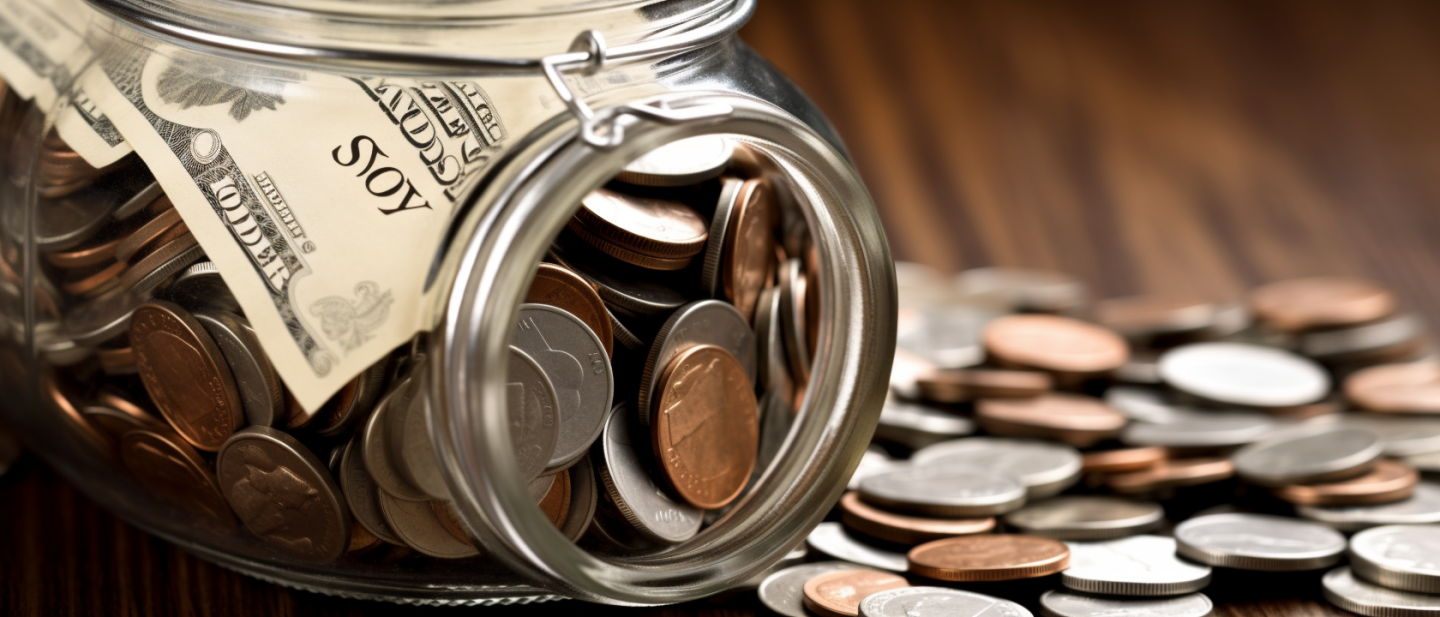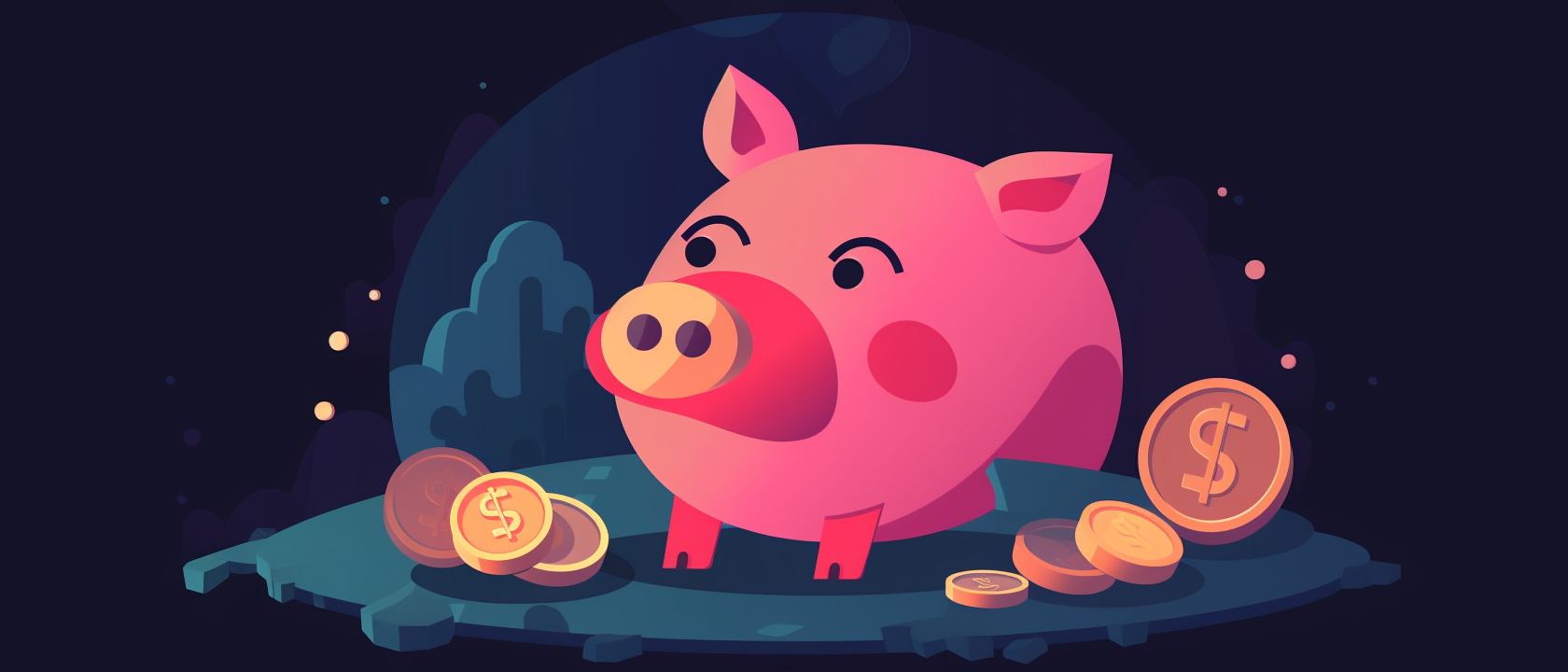


Best High-Yield Savings Accounts 2024
A high-yield savings account allows you to earn interest on your savings. Accounts like Marcus by Goldman Sachs and Sallie Mae’s SmartyPig are strong options.
Table Of Contents
In today’s low-interest-rate environment, locating a savings account that offers substantial returns may seem like a challenging task. To make it easier, we’ve done the heavy lifting. Get ready to discover the cream of the crop when it comes to high-yield savings accounts, one of the best ways to earn higher interest.
This article shines a spotlight on the top contenders that combine attractive interest rates, robust features, and unparalleled peace of mind. Prepare to unlock your savings potential and witness your money flourish with these exceptional accounts that surpass the ordinary.
Best High-Yield Savings Accounts
| Bank | APY | Minimum Deposit | Monthly Fees |
|---|---|---|---|
| Marcus by Goldman Sachs | 4.15% | $0 | None |
| Varo Savings Account | 3.00% to 5.00% | $0 | None |
| Consumers Credit Union Smart Saver | 0.25% to 2.00% | $5 | None |
| Sallie Mae SmartyPig Account | 3.75% | $0 | None |
| Axos Bank High-Yield Savings Account | 0.61% | $250 | None |
Marcus by Goldman Sachs
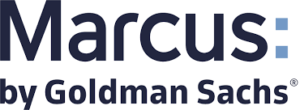
Show More Details
Marcus by Goldman Sachs offers one of the highest APYs on the market — nearly 8x the national average. With no fees, no minimum deposit, and fast same-day transfers, Marcus earns a DollarGeek rating of 4.7 out of 5.
Process to Open an Account: Opening a Marcus HYSA is simple. Just complete a quick, online form with your personal information. They do not require a minimum deposit or credit check.
Withdrawing Funds: According to Marcus, transfers of $100,000 or less made by 12 PM ET on a business day are processed by 5 PM ET the same day. However, some customers claim they’ve experienced difficulty in withdrawing their funds.
Pros:
- Well-known and highly rated
- High APY
- No fees
- Customer support available 24/7
- Competitive referral bonus
Cons:
- Doesn’t offer a connected checking account
- No ATMs or physical locations
Additional Details
Marcus offers a competitive referral bonus that competitors don’t. If you refer a friend, both parties earn an additional 1.00% APY for 3 months.
Varo Savings Account
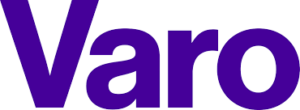
Show More Details
Varo’s HYSA offers a 5.00% APY on up to $5,000, then 3.00% APY on everything else. With no fees and practical features like automatic savings, Varo earns a DollarGeek rating of 4.2 out of 5.
Process to Open an Account: To open a Varo Bank Account, download the Varo app, answer a few questions, then receive an application decision.
Withdrawing Funds: Varo allows for an unlimited number of transfers and withdrawals. However, transfers to external accounts are limited to $10,000 per month and $5,000 per transaction. Wire transfers are not available.
Pros:
- High APY
- No fees
- Customer support 7 days/week
- Offers a connected checking account
Cons:
- No ATMs or physical locations
- Lower APY for balances over $5,000
- Low withdrawal and transfer limit
- No referral bonuses
Additional Details
To earn the full 5.00% APY, you must receive at least $1,000 on qualifying direct deposits and your balance must be positive at the end of the cycle. If you don’t have direct deposit set up within your Varo account, you will not qualify for the highest APY.
Consumers Credit Union Smart Saver

Show More Details
Consumers Credit Union (CCU) offers the Smart Saver savings account, with a maximum APY of 2.00%. To receive the full 2.00% APY, you must:
- Have a CCU checking account
- Have direct or mobile deposit of at least $500 per month within the checking account
- Deposit at least $50 per month into the savings account
- Enroll in eDocuments
After that, contributions are capped at $1,000 per month.
Process to Open an Account: If you are already a CCU checking account holder, simply complete the Smart Saver application on their website. If you are not a CCU checking account holder, you’ll need to open a checking account then apply for the Smart Saver account.
Withdrawing Funds: CCU customers can make unlimited transfers out of their Smart Saver savings account and into their CCU checking account. If you’d prefer to withdraw Smart Saver funds in-person at an ATM, you’ll need to transfer the funds to your checking account first.
Pros:
- No fees
- Customer support 6 days/week
- Offers a connected checking account
- Offers ATMs and physical locations
- Strong customer experience
Cons:
- Low APY
- $1,000 monthly deposit limit
- No referral bonuses
- Contribution limit of $1,000 per month
Additional Details
Consumers Credit Union may be ideal for older users. Their in-person banking options and 1-on-1 virtual calls make asking questions and managing money accessible to a wider audience than some of their competitors with solely online services.
Sallie Mae SmartyPig Account
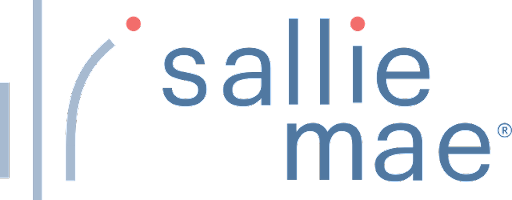
Show More Details
With a competitive APY, no monthly maintenance fees, and an easy-to-use mobile app, Sallie Mae’s SmartyPig online savings account earns a DollarGeek rating of 4.4 out of 5.
SmartyPig is designed to function like a virtual piggy bank — users set specific savings goals and deadlines, automatic deposits keep you on track to your goals, and SmartyPig tracks your progress.
Process to Open an Account: Opening a SmartyPig account is quick and simple. Just complete the short form on the Sallie Mae website.
Withdrawing Funds: To withdraw funds, transfer electronically via an ACH transaction to your linked account.
Pros:
- No fees
- Customer support 5 days/week
- Competitive APY
- $10 reward for referring a friend
Cons:
- No ATMs or physical locations
- Doesn’t offer a connected checking account
Additional Details
The SmartyPig account’s APY functions on a tiered structure:
- 3.75% APY for balances of $0.01 to $2,500
- 3.75% APY for balances of $2,500.01 to $10,000
- 3.75% APY for balances of $10,000.01 to $50,000
Currently, these rates are the same, although they may differ over time.
Axos Bank High Yield Savings Account

Show More Details
Axos Bank’s HYSA has few fees, no minimum balance requirements, and over 91,000 surcharge-free ATMs throughout the United States, but its APY is lower than most competitors.
Process to Open an Account: To open an Axos HYSA, complete the 15-minute application on their website. An Axos checking account is not needed to open the HYSA.
Withdrawing Funds: To withdraw funds, customers can either use one of the surcharge-free ATMs within their network or transfer funds to a linked checking account.
Pros:
- 24/7 customer service
- ATM locations; Optional ATM card
- No fees
- Offers a connected checking account
Cons:
- Minimum deposit of $250 required
- Low APY in comparison to competitors
Additional Details
Axis Bank’s interest is offered in tiers:
- 0.61% APY for balances under $25,000
- 0.25% APY for balances between $25,000 and $100,000
- 0.15% APY for balances over $100,000
Understanding Top-Rated Savings Opportunities
The present-day peak interest rate for savings accounts sits at over 5%. Similar trends are observed in other deposit options, such as certificates of deposit and money market accounts. Particularly in the sphere of high-yield savings, online banking platforms often outshine traditional banks in terms of rates.
Direction Of High-Yield Savings Rates: Up Or Down?
Contrary to some concerns, high-yield savings interest rates have not declined. In fact, since 2022, a consistent rise has been witnessed, extending into 2023. This can be attributed mainly to the Federal Open Market Committee’s anti-inflationary policies, which have included gradual increases in the federal funds rate, the overnight lending rate between banks.
With adjustments in the federal funds rate, banks usually respond by adjusting savings and other deposit accounts accordingly. Higher rates in the interbank lending often lead to higher payout rates for depositors.
However, there’s a limit to how far banks will go in raising these rates to entice customers. It’s possible that at some point, the rates will level off or even decrease, particularly if the Federal Reserve makes rate cuts, leading to potential declines in savings account APYs.
Predicting Changes In High-Yield Savings Rates
High-yield savings rates are subject to change and are influenced by several variables. Fluctuations in the federal funds rate, sometimes occurring several times a year, often lead banks to modify savings rates. Additionally, promotional increases can complicate predictions regarding rate changes.
The rates have been ascending for over a year, with the Fed implementing 10 rate hikes in 2022 and 2023. A continued upward trend is expected this year.
Safety Of High-Yield Savings Accounts (HYSA)
Generally considered secure, high-yield savings accounts are often insured by the FDIC or NCUA, depending on the institution. Numerous security measures, such as multifactor authentication and data encryption, are implemented to safeguard personal and financial data.
Online Savings Accounts And Their Fee Structure
Online savings accounts typically come with fewer or lower fees compared to traditional ones. They often lack monthly maintenance fees or minimum balance prerequisites.
Although generally low on fees, there might be charges for certain services like paper statements or excessive transactions. It’s crucial to understand the fine print to avoid surprises.
Selecting The Right High-Yield Savings Account
When looking for the best high-yield savings account, consider the following:
- Interest Rate: This is pivotal in maximizing savings.
- Deposit Requirements: Some accounts might require a specific opening deposit or balance to earn interest or avoid fees.
- Account Fees: High fees can negate interest gains, so look for any hidden charges.
- Compounding Frequency: More frequent compounding helps in earning more interest.
Opening A High-Yield Savings Account Online
The process is straightforward. After choosing an appropriate account, you’ll need to fill out an online form. Expect to provide:
- Personal details, such as name, address, and contact information.
- Identification, such as a Social Security number and government-issued ID.
- Information about the funding source.
If it’s a joint account, both parties must provide relevant information.
Ideal Uses For High-Yield Savings Accounts
These accounts are best suited for short-term savings goals, not retirement savings. They can be used for:
- Large Expenses: Such as a down payment, renovations, new vehicles, wedding costs, or an emergency fund.
- Education: For tuition, extracurricular activities, college expenses, or living costs.
- Vacation: To cover all aspects of travel, from flights to souvenirs.
High-Yield Savings Account: A Worthwhile Option?
For short-term goals, a high-yield savings account can be an excellent tool. While not suitable for retirement or long-term investment, it’s ideal for specific savings needs, like an emergency fund. However, its utility may vary depending on the timeframe and purpose of the savings.
Other Savings Options
Besides high-yield savings accounts, other alternatives include:
- Money Market Accounts: Combining checking and savings features.
- Certificates of Deposit (CDs): Higher rates but fixed terms.
- Cash Management Accounts: Functioning like checking but with competitive interest rates.
- Investment Accounts: Potentially higher returns but at greater risk.
Frequently Asked Questions (FAQs)
Why Should I Consider A High-Yield Savings Account?
It’s a great way to earn more on your savings due to higher interest rates, making your money work harder for you.
How Is A High-Yield Savings Account Different From A Regular Savings Account?
The main difference is the interest rate. High-yield savings accounts offer significantly higher interest rates, which means more returns on your savings.
Are There Any Fees Associated With High-Yield Savings Accounts?
It depends on the bank. Some may charge monthly service fees, but these are often waivable with a minimum balance. Always check the fee schedule before opening an account.
How Often Do Interest Rates Change On High-Yield Savings Accounts?
Interest rates can change anytime due to economic conditions. Banks adjust rates in response to changes in the Federal Reserve’s monetary policy.
Are High-Yield Savings Accounts Insured?
Yes, like regular savings accounts, high-yield savings accounts at FDIC-insured banks are insured up to $250,000.
Can I Lose Money In A High-Yield Savings Account?
No, the balance in a high-yield savings account never decreases unless you withdraw funds or incur fees. However, the purchasing power of your balance could decrease over time due to inflation.
How Often Is Interest Compounded On A High-Yield Savings Account?
It varies by bank, but it could be daily, monthly, quarterly, or annually. The more frequently interest is compounded, the more you earn.
Can I Withdraw Money From A High-Yield Savings Account Anytime?
Yes, but be aware of the federal limit of six “convenient” transfers or withdrawals per month from savings accounts. Some banks may charge a fee if you exceed this limit.



